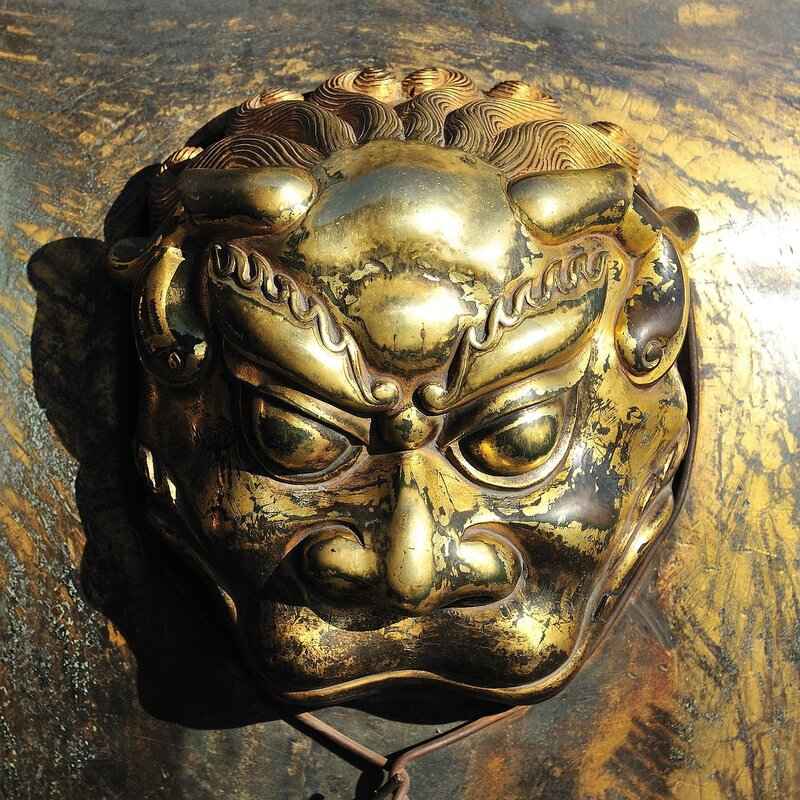Beijing’s culinary landscape is a vibrant tapestry woven from centuries of tradition, innovation, and cultural significance. The city’s food scene is a reflection of its rich history, showcasing a variety of iconic dishes that entice locals and visitors alike. From the world-famous Peking Duck to the comforting flavors of Zhajiangmian, Beijing offers a gastronomic adventure that is both diverse and delicious.
Peking Duck is perhaps the most celebrated dish in Beijing, known for its crispy skin and succulent meat. This iconic dish is traditionally served with thin pancakes, hoisin sauce, and fresh scallions, allowing diners to create their own flavorful wraps. The preparation of Peking Duck is an art form, steeped in tradition and skill.
The preparation of Peking Duck is a meticulous process that begins with air-drying the duck to ensure the skin becomes crispy during roasting. The duck is seasoned and then roasted in a wood-fired oven, which plays a crucial role in achieving its signature texture and flavor. This method of cooking not only enhances the taste but also adds a unique aroma that is characteristic of authentic Peking Duck.
The secret to the crispy skin lies in the air-drying technique combined with high-temperature roasting. This process allows moisture to escape, resulting in a beautifully crisp exterior that contrasts perfectly with the tender meat inside.
Traditionally, Peking Duck is served with thin pancakes, hoisin sauce, and sliced scallions. Diners can create their own wraps, making each bite a delightful combination of flavors and textures. This interactive dining experience enhances the enjoyment of the meal.
Beijing is home to numerous restaurants famous for their Peking Duck. Renowned establishments such as Quanjude and Dadong are celebrated for their traditional recipes and expert preparation techniques, making them must-visit spots for anyone looking to savor this iconic dish.
Zhajiangmian, or fried sauce noodles, is another beloved dish from Beijing. This hearty meal consists of wheat noodles topped with a savory fermented soybean paste sauce, often accompanied by fresh vegetables like cucumbers and bean sprouts. It is a comforting dish that showcases the simplicity and depth of Beijing’s culinary offerings.
The preparation of Zhajiangmian involves stir-frying ground pork with fermented soybean paste, resulting in a rich and flavorful sauce. The dish is then served over cooked noodles, garnished with fresh vegetables that add a crunchy contrast to the soft noodles.
- Wheat noodles
- Ground pork
- Fermented soybean paste
- Fresh vegetables (e.g., cucumbers, bean sprouts)
Each of these ingredients plays a vital role in creating the unique flavor and texture that Zhajiangmian is known for.
Beyond Peking Duck and Zhajiangmian, Beijing cuisine features a variety of other dishes that reflect the region’s culinary diversity. Jiaozi (dumplings), Hot Pot, and various stir-fried dishes are integral to the local food scene, each offering its own unique flavors and preparation methods.
Beijing dumplings, or Jiaozi, are typically filled with a mixture of meat and vegetables, wrapped in thin dough. They can be boiled, steamed, or pan-fried, showcasing their versatility. Dumplings are often enjoyed during celebrations and family gatherings, symbolizing unity and prosperity.
Hot Pot is a communal dining experience that embodies Beijing’s culture of sharing meals. Diners cook a variety of ingredients in a simmering pot of broth, creating a flavorful and interactive dining experience that fosters connection and enjoyment among friends and family.
In summary, Beijing’s culinary scene is a rich blend of history, tradition, and innovation. With its iconic dishes and unique flavors, the capital stands as a gastronomic destination that continues to attract food lovers from around the world.

What is Peking Duck?
Peking Duck is not just a dish; it is a culinary icon that embodies the rich history and culture of Beijing. Renowned for its crispy skin and succulent meat, this dish has garnered international acclaim and is often considered a must-try for anyone visiting the capital of China. Traditionally, Peking Duck is served with thin pancakes, hoisin sauce, and fresh scallions, allowing diners to experience a delightful combination of flavors and textures.
The uniqueness of Peking Duck lies in its preparation and presentation. The duck is air-dried and seasoned before being roasted in a wood-fired oven, a method that contributes to its signature crispy skin. The roasting process is meticulous, often taking several hours to ensure the perfect balance of flavor and texture. The result is a dish that is both visually stunning and delicious.
The preparation of Peking Duck is an art form that requires skill and patience. The process begins with selecting a high-quality duck, which is then inflated with air to separate the skin from the fat. This crucial step is followed by a thorough seasoning with a blend of spices and a glaze made from maltose. After being hung to dry, the duck is roasted in a hot oven until the skin is perfectly crisp. This intricate process is what sets Peking Duck apart from other roasted duck dishes.
When served, Peking Duck is accompanied by thin pancakes, which are used to wrap the duck slices along with hoisin sauce and scallions. This combination not only adds flavor but also creates a unique dining experience where each bite is a harmonious blend of sweet, savory, and fresh elements. The pancakes serve as a vessel, allowing diners to customize their wraps to their liking.
For those seeking an authentic experience, Beijing is home to several renowned restaurants famous for their Peking Duck. Quanjude and Dadong are among the most celebrated establishments, offering traditional recipes and expert preparation techniques. These restaurants often attract both locals and tourists, making them essential stops for anyone wanting to indulge in this iconic dish.
Peking Duck is not only a culinary delight but also a symbol of Chinese culture and hospitality. Traditionally served during festive occasions and important gatherings, it reflects the importance of food in bringing people together. The ritual of sharing Peking Duck has become a cherished part of Chinese dining culture, emphasizing the communal aspect of meals.
- Wrap it Right: Use the pancakes to wrap the duck, adding a generous amount of hoisin sauce and scallions.
- Savor the Skin: Take a moment to appreciate the crispy skin before diving into the meat.
- Pair with Tea: Enjoy your meal with a cup of Chinese tea to enhance the flavors.
In conclusion, Peking Duck is a dish that offers a glimpse into the culinary heritage of Beijing. Its rich flavors, meticulous preparation, and cultural significance make it a must-try for anyone exploring the vibrant food scene of the city. Whether enjoyed in a bustling restaurant or at a family gathering, Peking Duck continues to be a celebrated dish that captivates the taste buds of all who try it.

How is Peking Duck Prepared?
Peking Duck is not merely a dish; it is a culinary masterpiece that represents the rich heritage of Beijing cuisine. The preparation of this iconic dish is a meticulous process that requires skill, patience, and a deep understanding of traditional cooking methods. Below, we delve into the intricate steps involved in preparing Peking Duck, revealing what makes this dish so exceptional.
The preparation of Peking Duck is a multi-step process that begins long before the duck ever enters the oven. The first step involves selecting a high-quality duck, typically a White Pekin duck, known for its tender meat and rich flavor. Once selected, the duck undergoes a thorough cleaning, followed by a unique air-drying process. This crucial step allows the skin to dry out, which is essential for achieving that coveted crispy texture.
- Air-Drying: The duck is hung in a cool, ventilated area for several hours, allowing moisture to evaporate. This technique is pivotal for creating a crispy skin.
- Seasoning: After air-drying, the duck is seasoned with a mixture of spices, often including salt, five-spice powder, and maltose syrup. This not only enhances the flavor but also contributes to the browning of the skin during roasting.
- Roasting: The seasoned duck is then roasted in a traditional wood-fired oven. The intense heat from the wood fire caramelizes the skin, resulting in a delightful crunch. The roasting process typically lasts for about an hour, during which the chef must carefully monitor the temperature to ensure even cooking.
The secret behind the legendary crispiness of Peking Duck’s skin lies in the combination of air-drying and high-temperature roasting. As the duck roasts, the fat beneath the skin renders out, while the dry skin becomes crispy. This contrast between the crispy exterior and the juicy interior is what makes Peking Duck a truly unique dining experience.
Wood-fired ovens play a vital role in the preparation of Peking Duck. The flames from the wood not only provide a high and consistent heat but also infuse the duck with a rich, smoky flavor that cannot be replicated with conventional ovens. This traditional method of cooking is a hallmark of authentic Peking Duck, ensuring that every bite is packed with flavor.
Traditionally, Peking Duck is served with thin pancakes, hoisin sauce, and sliced scallions. Diners can create their own wraps, layering the crispy duck skin with the sweet sauce and fresh vegetables. This interactive dining experience adds to the enjoyment of the meal, allowing each person to customize their dish according to their taste.
For those eager to experience authentic Peking Duck, Beijing is home to several renowned restaurants. Establishments like Quanjude and Dadong have perfected the art of Peking Duck preparation, attracting both locals and tourists alike. These restaurants often showcase the entire cooking process, providing diners with a glimpse into the intricate techniques involved.
In conclusion, the preparation of Peking Duck is a labor of love that combines tradition, skill, and culinary artistry. Each step, from air-drying to roasting, plays a crucial role in creating this iconic dish. Whether enjoyed in a bustling restaurant in Beijing or prepared at home, Peking Duck remains a symbol of the city’s rich culinary heritage.
What Makes the Skin So Crispy?
The crispy skin of Peking Duck is a hallmark of this iconic dish, captivating food lovers around the globe. Achieving this perfect texture is no simple feat; it requires a meticulous process that combines traditional techniques with a deep understanding of culinary science. In this section, we will explore the secrets behind the duck’s extraordinary skin, focusing on the air-drying method and the high-temperature roasting that contribute to its signature crispiness.
The first step in achieving that coveted crispy skin is the air-drying technique. After the duck is cleaned and seasoned, it is hung in a cool, dry place for several hours, sometimes even overnight. This process allows the moisture on the skin to evaporate, which is crucial for the next steps of preparation. With less moisture present, the skin can become significantly crispier during roasting.
Once the duck has been properly air-dried, it is time for roasting. The duck is placed in a wood-fired oven or a specially designed roasting chamber that reaches high temperatures, often exceeding 400°F (200°C). This intense heat is vital for rendering the fat beneath the skin, allowing it to bubble away and create that delightful crunch. The high temperature also caramelizes the skin, giving it a rich, golden-brown color that is visually appealing.
Seasoning is another critical element in the preparation of Peking Duck. A mixture of spices, including five-spice powder, is often rubbed onto the skin before air-drying. This not only enhances the flavor but also contributes to the texture. The seasoning penetrates the skin, creating a flavor profile that complements the crispy exterior and juicy interior.
Some chefs may employ additional techniques to further enhance the crispiness of the skin. For example, blanching the duck in boiling water before air-drying can help tighten the skin, making it even crispier during roasting. Additionally, some recipes call for glazing the duck with a sugar-based mixture prior to roasting, which caramelizes and adds an extra layer of crunch.
The way Peking Duck is served can also influence how diners perceive its crispiness. Traditionally, it is accompanied by thin pancakes, hoisin sauce, and sliced scallions. The contrast between the crispy skin and the soft pancakes enhances the overall dining experience, allowing diners to appreciate the texture and flavor combination fully.
- Insufficient Air-Drying: Skipping or shortening the air-drying process can lead to soggy skin.
- Low Roasting Temperature: Roasting at too low a temperature may prevent the skin from becoming crispy.
- Inadequate Seasoning: Failing to season the duck properly can result in bland flavors that overshadow the crispy texture.
In summary, the secret to the crispy skin of Peking Duck lies in the careful combination of air-drying, high-temperature roasting, and proper seasoning. Each step plays a vital role in creating the dish’s renowned texture and flavor, making it a beloved choice in Beijing cuisine and beyond.
Importance of Wood-Fired Ovens
When it comes to cooking techniques that elevate the culinary experience, wood-fired ovens hold a special place, particularly in the preparation of Peking Duck. These ovens are not just a cooking appliance; they are an essential part of the cooking process that imparts a unique flavor and texture to the food.
The use of a wood-fired oven allows for an intense and consistent heat that is crucial for achieving the perfect roast. The flames from burning wood create a high-temperature environment that helps to render the fat from the duck’s skin, resulting in that iconic crispy texture that Peking Duck is celebrated for. This method of cooking is deeply rooted in tradition and has been perfected over centuries, ensuring that each duck is roasted to perfection.
- Flavor Enhancement: The wood used in the oven contributes a subtle smokiness that enhances the natural flavors of the duck. Different types of wood can impart varying flavor profiles, allowing chefs to experiment and create unique dishes.
- Moisture Retention: The intense heat from the wood-fired oven not only crisps the skin but also seals in the moisture of the meat. This results in a juicy and tender interior that contrasts beautifully with the crispy exterior.
- Traditional Cooking Technique: The art of roasting duck in a wood-fired oven is a time-honored technique that connects modern chefs with their culinary heritage. It reflects a commitment to authenticity and quality in Beijing cuisine.
Moreover, the process of roasting in a wood-fired oven is not just about the end product; it is also about the experience. The mesmerizing flames and the aroma of burning wood create an atmosphere that is integral to the dining experience. Diners can appreciate the skill and dedication that goes into preparing their meal, making it a more engaging and memorable occasion.
In addition to Peking Duck, wood-fired ovens are versatile and can be used to prepare a variety of dishes, from roasted vegetables to artisan pizzas. The ability to cook at high temperatures allows for a range of culinary possibilities, making the wood-fired oven a valuable tool in any chef’s repertoire.
As diners continue to seek authentic and flavorful experiences, the importance of wood-fired ovens in the culinary world cannot be overstated. They not only enhance the taste and texture of dishes but also preserve the traditions that define cuisines around the globe. The next time you savor a perfectly roasted Peking Duck, take a moment to appreciate the craftsmanship behind it, rooted in the age-old practice of cooking with fire.
Serving Suggestions for Peking Duck
are essential to fully appreciate this iconic dish. Traditionally, Peking Duck is accompanied by thin pancakes, hoisin sauce, and sliced scallions. This combination not only enhances the flavor but also allows diners to engage in a delightful and interactive dining experience.
The thin pancakes, often referred to as “bao”, serve as the perfect vessel for the succulent duck meat. The softness of the pancake contrasts beautifully with the crispy skin of the duck, creating a harmonious blend of textures. To prepare your wrap, simply place a few slices of the duck on the pancake, add a drizzle of hoisin sauce, and top with fresh scallions. Roll it up, and you have a delicious bite that encapsulates the essence of Peking Duck.
Additionally, some diners enjoy adding a touch of cucumber or carrot for an extra crunch and freshness. These vegetables not only enhance the flavor profile but also provide a vibrant color contrast, making the dish visually appealing. The combination of sweet, savory, and fresh elements in each wrap creates a multifaceted taste experience that is both satisfying and memorable.
For those looking to elevate their Peking Duck experience, consider pairing it with a selection of Chinese teas. A cup of Jasmine tea or Oolong tea can cleanse the palate and complement the rich flavors of the duck. The aromatic qualities of these teas enhance the overall dining experience, making it a feast for both the senses and the taste buds.
When serving Peking Duck at home, presentation is key. Arrange the pancakes, hoisin sauce, and scallions on a beautiful platter to invite your guests to create their own wraps. This interactive element not only makes for a fun dining experience but also encourages conversation and connection among diners.
Moreover, if you are hosting a gathering, consider offering a variety of dipping sauces alongside the traditional hoisin sauce. Options like spicy chili sauce or a sesame sauce can add an exciting twist to the classic dish. Each guest can customize their wraps to suit their taste preferences, making the meal more personal and enjoyable.
In conclusion, the go beyond the basic components of pancakes, hoisin sauce, and scallions. By incorporating fresh vegetables, selecting complementary beverages, and enhancing the presentation, you can create a memorable dining experience that celebrates the rich flavors and traditions of this beloved dish. Whether enjoyed at a restaurant or prepared at home, Peking Duck remains a symbol of Beijing’s culinary heritage, inviting all to partake in its delicious legacy.
Where to Find Authentic Peking Duck
Beijing is a city that tantalizes the taste buds, and one of its most famous culinary treasures is Peking Duck. This dish is not just a meal; it is an experience that showcases the rich culinary heritage of the capital. When it comes to savoring this iconic dish, several restaurants stand out for their exceptional preparation and tradition.
For those seeking the best Peking Duck in Beijing, a few establishments have earned their reputation through years of dedication to authentic recipes and cooking techniques. Here are some of the most renowned places:
- Quanjude: Established in 1864, Quanjude is perhaps the most famous Peking Duck restaurant in Beijing. Known for its time-honored roasting techniques, the restaurant serves duck that is crispy on the outside and succulent on the inside. Diners can watch the skilled chefs prepare the duck in an open kitchen, adding to the experience.
- Dadong: This modern restaurant has gained popularity for its innovative take on Peking Duck. Dadong offers a lighter version of the dish, with a focus on health without compromising flavor. The ambiance is chic and contemporary, making it a favorite among younger diners.
- Li Qun: For a more rustic experience, Li Qun is a hidden gem located in a traditional courtyard. The restaurant prides itself on its traditional cooking methods, using a wood-fired oven that enhances the flavor of the duck. The cozy atmosphere and authentic preparation make it a must-visit.
- Da Dong Roast Duck: This establishment is another popular choice among locals and tourists alike. Known for its commitment to quality, Da Dong serves Peking Duck that is roasted to perfection, accompanied by all the traditional condiments.
Each of these restaurants offers something unique that enhances the Peking Duck experience. For instance:
- Tradition vs. Innovation: While Quanjude sticks to traditional methods, Dadong embraces modern culinary trends. This contrast provides diners with options that suit their preferences.
- Ambiance: The setting of each restaurant adds to the overall experience. Whether it’s the historical charm of Li Qun or the sleek design of Dadong, the atmosphere plays a crucial role in dining enjoyment.
- Service Quality: Exceptional service is a hallmark of these establishments. Knowledgeable staff guide diners through the menu and suggest the best pairings for the duck, enhancing the overall experience.
When dining on Peking Duck, there are certain practices that can elevate the experience:
- Order the Duck with Traditional Accompaniments: Always ask for the thin pancakes, hoisin sauce, and sliced scallions. These elements are essential for creating the perfect wrap.
- Watch the Carving: Many restaurants offer a carving ceremony where the chef skillfully slices the duck in front of diners. This not only showcases the chef’s skills but also adds an element of entertainment to the meal.
- Pair with Chinese Tea: A cup of traditional Chinese tea can cleanse the palate and enhance the flavors of the duck.
Exploring the world of Peking Duck in Beijing is not just about the food; it’s about immersing oneself in a rich cultural experience. With a variety of restaurants offering unique takes on this classic dish, every visit promises a delightful culinary journey.

What is Zhajiangmian?
Zhajiangmian, often referred to as fried sauce noodles, is a beloved dish hailing from Beijing that embodies the essence of Chinese comfort food. This hearty meal is characterized by its distinctive combination of wheat noodles and a rich, savory sauce made primarily from fermented soybean paste. The dish is not only popular in Beijing but has also gained a following across various regions of China and among food enthusiasts worldwide.
The uniqueness of Zhajiangmian lies in its simplicity and the depth of flavor it offers. The dish typically features thick wheat noodles topped with a sauce that combines ground pork and fermented soybean paste. This sauce is often enhanced with various seasonings, creating a robust flavor profile that is both savory and slightly sweet.
The preparation of Zhajiangmian involves several key steps:
- Stir-frying the Pork: Ground pork is stir-fried until it is browned and crispy.
- Creating the Sauce: Fermented soybean paste, along with other seasonings, is added to the pork, allowing the flavors to meld together.
- Cooking the Noodles: Wheat noodles are boiled until tender and then drained.
- Assembly: The savory sauce is generously ladled over the noodles and garnished with fresh vegetables.
To create an authentic Zhajiangmian, certain ingredients are essential:
- Wheat Noodles: The foundation of the dish, offering a chewy texture.
- Ground Pork: Provides protein and a rich, meaty flavor.
- Fermented Soybean Paste: The star ingredient that gives the sauce its unique taste.
- Fresh Vegetables: Commonly used are sliced cucumbers, bean sprouts, and scallions, which add freshness and crunch.
While the traditional version of Zhajiangmian is beloved, there are several regional variations that reflect local tastes:
- Vegetarian Options: Some versions substitute ground pork with mushrooms or tofu for a plant-based alternative.
- Spicy Zhajiangmian: In some regions, chili oil or spicy bean paste is added to give the dish a fiery kick.
- Cold Noodle Variants: During the hot summer months, cold versions of Zhajiangmian are popular, served with chilled noodles and fresh toppings.
For those looking to experience authentic Zhajiangmian, numerous restaurants in Beijing serve this dish. Popular spots include:
- Haidilao: Known for its quality ingredients and flavorful dishes.
- Zhajiangmian Wang: A restaurant specializing in various styles of Zhajiangmian.
- Local Street Vendors: Often, the best Zhajiangmian can be found at street stalls, where it is served fresh and hot.
In conclusion, Zhajiangmian is more than just a meal; it is a cultural symbol that represents the culinary heritage of Beijing. With its rich flavors and comforting nature, it continues to be a favorite among locals and visitors alike. Whether enjoyed in a bustling restaurant or at a quiet home dinner, Zhajiangmian remains a testament to the simplicity and depth of Chinese cuisine.
fried sauce noodles,
Beijing cuisine is a vibrant tapestry of flavors and traditions, showcasing a variety of dishes that reflect the rich cultural heritage of China’s capital. Among these, Peking Duck and Zhajiangmian stand out as iconic representations of the city’s culinary prowess. In this article, we will explore these beloved dishes, their preparation methods, and their significance in Beijing’s food culture.
Zhajiangmian, often referred to as fried sauce noodles, is a beloved dish in Beijing. It features wheat noodles topped with a savory sauce made from fermented soybean paste and ground pork. The dish is not only hearty but also offers a delightful balance of flavors and textures.
The preparation of Zhajiangmian is relatively straightforward yet requires attention to detail. The process typically involves:
- Stir-frying ground pork until it is browned and fragrant.
- Adding fermented soybean paste to create a rich, flavorful sauce.
- Cooking the wheat noodles until tender and then mixing them with the sauce.
- Garnishing with fresh vegetables like sliced cucumbers and bean sprouts for added crunch.
Key ingredients for a perfect Zhajiangmian include:
- Wheat Noodles: The base of the dish, providing a chewy texture.
- Ground Pork: Adds richness and protein to the meal.
- Fermented Soybean Paste: The star ingredient, giving the sauce its unique flavor.
- Fresh Vegetables: Such as cucumbers and bean sprouts, which enhance the dish’s freshness.
Zhajiangmian is more than just a dish; it embodies the communal spirit of Beijing’s dining culture. Traditionally, families gather around a table, each person customizing their bowl with various toppings. This interactive style of eating fosters a sense of togetherness and shared experience.
Beyond Peking Duck and Zhajiangmian, the culinary landscape of Beijing includes:
- Jiaozi: Dumplings filled with meat and vegetables.
- Hot Pot: A communal dish where diners cook ingredients in a simmering pot.
- Stir-Fried Dishes: Various vegetables and meats prepared with bold flavors.
Beijing dumplings, known as Jiaozi, are a staple of the local diet. They are typically filled with a mixture of ground meat and vegetables, wrapped in thin dough. The versatility of Jiaozi allows them to be boiled, steamed, or pan-fried, making them a popular choice for any meal.
Hot Pot is a quintessential Beijing dining experience, emphasizing sharing and interaction. Diners select a variety of ingredients, including meats and vegetables, to cook in a communal pot of simmering broth. This style of dining not only showcases the diverse ingredients of Beijing cuisine but also fosters social connections among diners.
In conclusion, Beijing’s culinary scene is a rich blend of history, tradition, and innovation. Dishes like Peking Duck and Zhajiangmian offer a glimpse into the cultural fabric of the city, making it a must-visit destination for food lovers around the world.
is another famous dish from Beijing. This hearty meal features wheat noodles topped with a savory soybean paste sauce, often accompanied by fresh vegetables.
Beijing cuisine is a vibrant tapestry of flavors and traditions, with dishes that reflect the rich history and cultural significance of the capital. Among the most celebrated dishes are Peking Duck and Zhajiangmian, each offering a unique culinary experience that showcases the artistry of Beijing’s chefs.
Peking Duck is a world-renowned dish famous for its crispy skin and tender meat. This iconic Beijing delicacy is traditionally served with pancakes, hoisin sauce, and sliced scallions, creating a delightful flavor combination that has captivated food lovers worldwide.
The preparation of Peking Duck is an intricate process that involves air-drying the duck, seasoning it, and roasting it in a wood-fired oven. This method ensures the skin becomes perfectly crispy while the meat remains juicy, a testament to the skill of the chefs.
The secret to the duck’s crispy skin lies in the air-drying technique, which allows moisture to escape. This step, combined with the high-temperature roasting, results in a uniquely crispy exterior that is a hallmark of this dish.
Wood-fired ovens impart a distinct flavor to the duck, enhancing its taste. The intense heat from the oven is crucial for achieving the desired texture and flavor profile that defines authentic Peking Duck.
Traditionally, Peking Duck is served with thin pancakes, hoisin sauce, and sliced scallions. This combination allows diners to create their own wraps, enhancing the overall dining experience and making each bite a unique creation.
Beijing boasts numerous restaurants renowned for their Peking Duck. Establishments like Quanjude and Dadong are celebrated for their traditional recipes and expert preparation techniques, making them must-visit spots for culinary enthusiasts.
Zhajiangmian, or fried sauce noodles, is another famous dish from Beijing. This hearty meal features wheat noodles topped with a savory soybean paste sauce, often accompanied by fresh vegetables, making it a staple in many households.
The preparation of Zhajiangmian involves stir-frying ground pork with fermented soybean paste, creating a rich sauce. The dish is then served over cooked noodles, garnished with sliced cucumbers and bean sprouts, adding freshness and crunch to every bite.
- Wheat noodles: The base of the dish.
- Ground pork: Adds richness and flavor.
- Fermented soybean paste: Provides the signature taste.
- Fresh vegetables: Enhance the dish’s nutritional value and texture.
Beyond Peking Duck and Zhajiangmian, Beijing cuisine includes a variety of other dishes such as Jiaozi (dumplings), Hot Pot, and various stir-fried dishes that reflect the region’s culinary diversity and rich flavors.
Beijing dumplings, or Jiaozi, are typically filled with meat and vegetables, wrapped in thin dough. They can be boiled, steamed, or pan-fried, showcasing versatility in preparation and a beloved comfort food in Beijing.
Hot Pot is a communal dining experience that aligns with Beijing’s culture of sharing meals. Diners cook a variety of ingredients in a simmering pot of broth, creating a flavorful and interactive dining experience that brings people together.
How is Zhajiangmian Made?
Zhajiangmian, a beloved dish in Beijing’s culinary repertoire, is renowned for its bold flavors and satisfying texture. This dish, which translates to “fried sauce noodles,” is a staple in many households and restaurants across the capital. Its preparation is not only a cooking process but also a cultural experience that brings families together.
The key components of Zhajiangmian include:
- Wheat Noodles: These are the foundation of the dish, providing a chewy texture that complements the sauce.
- Ground Pork: Adds richness and protein, making the dish hearty and filling.
- Fermented Soybean Paste: This is the star ingredient, giving the dish its distinctive umami flavor.
- Fresh Vegetables: Commonly used are sliced cucumbers and bean sprouts, which add freshness and crunch.
The process of making Zhajiangmian is relatively straightforward yet requires attention to detail to achieve the best results:
1. Cook the Noodles: Begin by boiling the wheat noodles in salted water until they are al dente. Drain and set aside.2. Prepare the Sauce: In a hot pan, stir-fry the ground pork until browned. This enhances the flavor and texture.3. Add the Fermented Soybean Paste: Once the pork is cooked, incorporate the fermented soybean paste. Stir well to combine, allowing the flavors to meld.4. Combine with Noodles: Toss the cooked noodles in the sauce, ensuring they are evenly coated.5. Garnish: Serve the dish with fresh cucumbers and bean sprouts on top for added flavor and presentation.
Zhajiangmian stands out due to its versatile flavor profile and the balance between the savory sauce and fresh vegetables. The fermented soybean paste not only provides depth but also a unique sweetness that complements the richness of the pork. This combination creates a dish that is both satisfying and complex.
Traditionally, Zhajiangmian is served as a standalone dish, but it can be enhanced with various toppings and side dishes:
- Chili Oil: For those who enjoy a bit of heat, a drizzle of chili oil can elevate the dish.
- Pickled Vegetables: Adding a side of pickled vegetables provides a tangy contrast to the rich flavors.
- Soft-Boiled Eggs: A soft-boiled egg can add creaminess and additional nutrition to the meal.
Zhajiangmian is more than just a meal; it is a symbol of comfort food in Beijing. Often enjoyed during family gatherings or casual dinners, it reflects the communal spirit of Chinese dining. The simplicity of its ingredients and the ease of preparation make it a favorite among home cooks and restaurant chefs alike.
In conclusion, Zhajiangmian is a dish that embodies the heart of Beijing’s culinary culture. Its rich flavors, combined with fresh ingredients, make it a must-try for anyone exploring the diverse food landscape of the city. Whether enjoyed at a bustling restaurant or made at home, Zhajiangmian offers a delicious taste of tradition.
What Ingredients are Essential for Zhajiangmian?
Zhajiangmian, often referred to as fried sauce noodles, is a beloved dish that embodies the essence of Beijing’s culinary heritage. This hearty meal is not only a staple in local households but also a favorite among food enthusiasts worldwide. To understand the depth of flavor and texture in Zhajiangmian, it is essential to explore its key ingredients.
The primary components of Zhajiangmian include wheat noodles, ground pork, fermented soybean paste, and a variety of fresh vegetables. Each ingredient plays a crucial role in creating the dish’s distinctive flavor profile and texture.
- Wheat Noodles: The foundation of Zhajiangmian, these noodles are typically thick and chewy, providing a satisfying base that holds the sauce well. The texture of the noodles complements the richness of the sauce, making each bite flavorful.
- Ground Pork: This ingredient is often stir-fried until golden brown, adding a savory depth to the dish. The pork absorbs the flavors of the fermented soybean paste, enhancing the overall taste.
- Fermented Soybean Paste: The star of the dish, this paste is what gives Zhajiangmian its characteristic umami flavor. Made from fermented soybeans, it imparts a rich, salty, and slightly sweet taste that is essential for the sauce.
- Fresh Vegetables: Typically, Zhajiangmian is garnished with sliced cucumbers, bean sprouts, and sometimes shredded carrots. These fresh elements add a crunch that balances the richness of the sauce, providing a refreshing contrast.
The magic of Zhajiangmian lies in the harmonious combination of its ingredients. The wheat noodles serve as a canvas, absorbing the flavors of the fermented soybean paste and the savory ground pork. The fresh vegetables not only enhance the visual appeal of the dish but also introduce a layer of texture that elevates the overall experience.
When preparing Zhajiangmian, the ground pork is typically stir-fried with the fermented soybean paste until well combined, creating a thick and rich sauce. This sauce is then generously ladled over the cooked wheat noodles, making for a comforting and satisfying meal. The addition of fresh vegetables is crucial, as they provide a refreshing crunch that cuts through the richness of the sauce, making each bite more enjoyable.
Zhajiangmian is not just a dish; it is an experience that reflects the culinary traditions of Beijing. Its simplicity and the availability of ingredients make it a popular choice for both home cooks and restaurant chefs. The dish is often enjoyed as a quick meal, perfect for busy days, yet it remains a beloved comfort food for many.
Moreover, the versatility of Zhajiangmian allows for variations based on personal preferences. Some may choose to add additional proteins, such as chicken or tofu, while others might incorporate different vegetables, tailoring the dish to their taste. This adaptability has contributed to its enduring popularity across generations.
In conclusion, the key ingredients of Zhajiangmian—wheat noodles, ground pork, fermented soybean paste, and fresh vegetables—each contribute significantly to the dish’s unique flavor and texture. Whether enjoyed at a local eatery or made at home, Zhajiangmian remains a quintessential representation of Beijing’s rich culinary landscape.
What Other Dishes Define Beijing Cuisine?
Beijing cuisine is a vibrant tapestry of flavors and cooking techniques, showcasing a rich cultural heritage. While Peking Duck and Zhajiangmian are perhaps the most famous dishes, the culinary landscape of Beijing extends far beyond these iconic meals. In this section, we will explore other essential dishes that define the region’s diverse and delectable cuisine.
Jiaozi, or Chinese dumplings, are a beloved staple in Beijing cuisine. These delightful pockets of flavor are typically filled with a mixture of ground meat, vegetables, and seasonings, all wrapped in a thin dough. They can be prepared in various ways, including boiling, steaming, or pan-frying, making them a versatile choice for any meal.
The preparation of Jiaozi involves several steps:
- Dough Preparation: A simple mixture of flour and water is kneaded into a smooth dough, then rolled out into thin circles.
- Filling Creation: A mixture of ground pork or beef, chopped vegetables such as cabbage or chives, and seasonings are combined to create a flavorful filling.
- Wrapping: A spoonful of filling is placed in the center of each dough circle, which is then folded and sealed to create a dumpling.
These dumplings can be enjoyed with a variety of dipping sauces, such as soy sauce or vinegar, enhancing their flavor.
Hot Pot is another essential element of Beijing’s culinary culture, known for its communal dining experience. Diners gather around a simmering pot of broth, where they can cook an assortment of ingredients, including thinly sliced meats, fresh vegetables, and noodles.
This dish emphasizes the importance of sharing meals in Beijing’s culture. The interactive nature of Hot Pot dining encourages conversation and connection among family and friends. Each diner can customize their meal by selecting ingredients and dipping them into the boiling broth, creating a unique flavor experience.
Stir-frying is a popular cooking technique in Beijing, resulting in a variety of delicious dishes. Some notable stir-fried options include:
- Chao Mian: Stir-fried noodles often combined with vegetables and protein, offering a satisfying meal.
- Gong Bao Chicken: A spicy dish made with diced chicken, peanuts, and vegetables, known for its bold flavors.
- Beef with Broccoli: Tender beef slices stir-fried with fresh broccoli in a savory sauce.
These dishes highlight the fast-paced cooking style that is a hallmark of Beijing’s culinary scene, allowing for quick preparation while retaining the freshness of ingredients.
The uniqueness of Beijing cuisine lies in its ability to blend flavors and textures, resulting in a diverse array of dishes that cater to various tastes. The use of fresh ingredients, bold spices, and traditional cooking methods contributes to the authenticity of each meal. Additionally, the cultural significance of food in Beijing fosters a sense of community and connection, making dining an integral part of life in the capital.
What are the Characteristics of Beijing Dumplings?
Beijing dumplings, known as Jiaozi, are a beloved staple in the culinary landscape of Beijing. These delightful dumplings are not only a popular dish among locals but also a favorite among visitors to the city. Their unique characteristics and versatile preparation methods make them a must-try for anyone exploring Beijing’s rich food culture.
The defining feature of Beijing dumplings is their filling, which can include a variety of ingredients. Common fillings consist of minced meat, such as pork or beef, combined with finely chopped vegetables like cabbage, carrots, and scallions. This combination results in a burst of flavor with each bite. The dumplings are wrapped in a thin, tender dough that is both chewy and satisfying.
Jiaozi can be prepared in several ways, allowing for a diverse dining experience. The most common methods include:
- Boiling: Dumplings are cooked in hot water until they float, indicating they are done.
- Steaming: This method retains the dumplings’ moisture and enhances their flavor.
- Pan-frying: Known as potstickers, this method gives the dumplings a crispy bottom while keeping the filling juicy.
The ingredients used in Jiaozi are crucial for achieving their signature taste. Key components include:
- Dough: Made from flour and water, the dough should be rolled thin for optimal texture.
- Meat: Pork is the most popular choice, but chicken, beef, or even vegetarian options are widely enjoyed.
- Vegetables: Fresh greens, mushrooms, and garlic add flavor and nutrition to the filling.
In Beijing, Jiaozi holds a special place in the hearts of its residents. Traditionally, dumplings are made during the Chinese New Year as a symbol of wealth and prosperity. Families gather to prepare and enjoy these dumplings together, reinforcing bonds and creating lasting memories. The act of making dumplings is often seen as a way to welcome good fortune for the year ahead.
For those eager to taste authentic Jiaozi, Beijing offers a plethora of dining options. Renowned restaurants such as Din Tai Fung and Jiaozi King serve traditional dumplings that are highly praised for their quality and flavor. Additionally, local street vendors provide a more casual yet equally delicious experience, allowing visitors to enjoy fresh dumplings on the go.
Jiaozi is typically served with a dipping sauce made from soy sauce, vinegar, and chili oil, enhancing the overall flavor profile. Diners can customize their dipping sauce to suit their taste preferences, making each bite even more enjoyable. Whether enjoyed as a snack, appetizer, or main dish, dumplings are a versatile food that can be savored in various contexts.
In summary, Beijing dumplings or Jiaozi, are more than just a dish; they are a reflection of the city’s culinary heritage and cultural significance. Their unique flavors, diverse preparation methods, and the joy of sharing them with loved ones make Jiaozi a quintessential part of Beijing’s food culture.

How Does Hot Pot Reflect Beijing’s Culinary Culture?
Hot Pot is more than just a meal; it is a vibrant communal dining experience that embodies the essence of Beijing’s culture of sharing and togetherness. As diners gather around a bubbling pot of broth, they engage in a culinary adventure that reflects both tradition and modernity.
Hot Pot, also known as huo guo in Mandarin, is a traditional Chinese dish where various ingredients are cooked at the table in a shared pot of simmering broth. The broth can be spicy, mild, or a combination of both, catering to different palates. Diners choose from an array of ingredients, including thinly sliced meats, fresh vegetables, tofu, and noodles, making each dining experience unique.
The popularity of Hot Pot in Beijing can be attributed to its interactive nature. Diners are not just passive consumers; they actively participate in the cooking process. This aspect fosters a sense of community and connection among friends and family, making it a favored choice for gatherings and celebrations. The act of cooking together cultivates a warm atmosphere, allowing for shared stories and laughter.
- Meats: Beef, lamb, and chicken are popular choices, often sliced thinly to cook quickly.
- Seafood: Shrimp, fish fillets, and squid add a delightful variety to the pot.
- Vegetables: Leafy greens, mushrooms, and root vegetables provide freshness and texture.
- Tofu: Various types of tofu, including firm and soft, soak up the flavors of the broth.
- Noodles: Rice noodles and wheat noodles are commonly added towards the end of the meal.
Enjoying Hot Pot involves more than just cooking; it is about savoring the experience. Diners typically start by selecting their preferred broth and letting it simmer. As ingredients cook, they are dipped into various sauces, such as sesame sauce or chili oil, enhancing the flavors. This personalization allows each diner to tailor their meal to their liking.
Hot Pot reflects Beijing’s culinary culture by emphasizing the importance of community dining. It serves as a social event where people come together, share food, and create memories. The communal aspect of Hot Pot resonates deeply within the fabric of Beijing’s society, where food is often a central part of social interactions.
Beijing is home to numerous Hot Pot restaurants, each offering its unique twist on this beloved dish. Popular spots include Haidilao, known for its exceptional service and variety of broths, and Little Sheep, famous for its flavorful lamb-based broth. These establishments provide an authentic Hot Pot experience, complete with a lively atmosphere and attentive service.
In conclusion, Hot Pot is a quintessential part of Beijing’s culinary landscape. Its communal nature, diverse ingredients, and cultural significance make it a must-try for anyone visiting the capital. Whether you are a seasoned Hot Pot enthusiast or a first-time diner, the experience promises to be both delicious and memorable.
Frequently Asked Questions
- What is the best way to enjoy Peking Duck?
The best way to enjoy Peking Duck is by wrapping the crispy skin and tender meat in a thin pancake, adding a touch of hoisin sauce and some fresh scallions. This combination creates a burst of flavors that dance on your palate!
- Can I make Zhajiangmian at home?
Absolutely! Making Zhajiangmian at home is quite simple. Just cook some wheat noodles, stir-fry ground pork with fermented soybean paste, and top it off with fresh veggies like cucumbers and bean sprouts for that authentic taste.
- What are some popular restaurants for Peking Duck in Beijing?
When in Beijing, you can’t miss out on trying Peking Duck at renowned places like Quanjude and Dadong. They are famous for their traditional recipes and expert roasting techniques that will leave you craving more!
- How do Beijing dumplings differ from other dumplings?
Beijing dumplings, or Jiaozi, are unique due to their thin wrappers and diverse fillings, which can include anything from meat to vegetables. They can be boiled, steamed, or pan-fried, giving you plenty of options to enjoy!
- What makes Hot Pot a cultural experience in Beijing?
Hot Pot is more than just a meal; it’s a social event! Diners gather around a bubbling pot, cooking various ingredients together, making it a fun and interactive way to bond over food.














